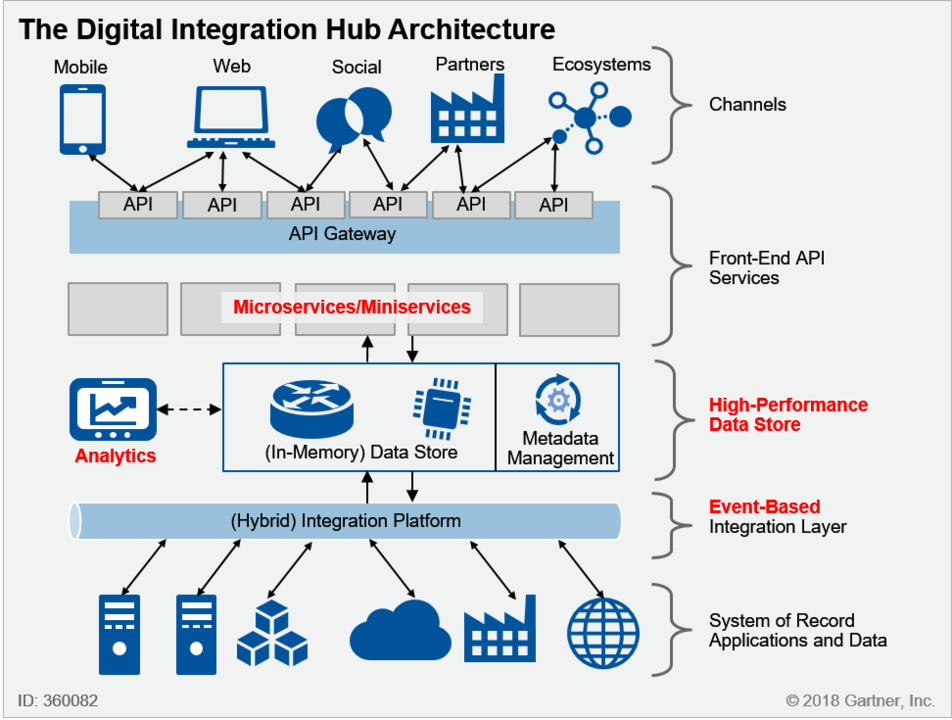Creating a data-driven culture has become the backbone of an organization’s ability to deliver operational excellence. Tapping into the power of data also improves decision-making capabilities in real-time to cater to expectations of new-age employees and customers. But it is easier said than done. Unfortunately, many organizations grapple with challenges such as inadequate control over their operational and historical data or complex touchpoints.
In some cases, they run into analytical problems while developing specific applications for activities like predictive maintenance, which thrive on the accuracy of speed and real-time analysis.
Creating an effective data-first culture starts in the design stage of your digital integration hub.
Let’s look at what that entails:
Read Blog: What is Digital Integration Hub?
Data lake: Creating a pool of operational excellence
The fundamental part of the DIH design is a data lake that differentiates between operational data and analytical data. Traditionally, the analytical data insights get stored in the same repository as transactions. But in this case, it is important to optimize the data lake so that it is possible to carry out business processes in real-time. By using Open Source solutions, you can create a bridge to connect your operational and historical data. It ensures your ability to harness deep-dive analytics from multiple data subsets to create more business momentum and drive better customer experiences.
Streamlining backend data touchpoints from your front-end API services also means that a lot of business-critical data is fed into and retrieved from the system. Hence, the DIH architecture must ensure your backend systems are safeguarded from unwanted third-party access, as well as query overloads during peak volumes.
Key aspects of a Digital Integration Hub design
- Seamless data sourcing and delivery to backend and frontend systems, with optimized touchpoints
- Automation of data lake storage for quick and safe inputs and retrieval
- Dashboard to assess, monitor, control and update your data workflows across the organization
- Self-service tools for improved workforce performance and smoother intra-team collaboration
- Improved governance and regulatory compliance in data integration
- Integration of IoT and other AI-powered touchpoints for wider data orchestration
- Provision to access real-time data around the clock, with a 360-degree view of operational and experience insights
Multi-cloud integration: Better agility, scalability, and security
A multi-cloud integration strategy involves using more than a single public cloud host. It requires multiple cloud vendors to work within a common architecture to achieve their respective outcomes. You can manage various integration components in the right cloud environment to mitigate the latency in your Digital Integration Hub that may be caused by handling large volumes of data.
Since you are dependent on one just cloud vendor, your metadata does not get locked in by their data protocols. Instead, you are free to pick a vendor whose systems and protocols are cohesive with yours. It also eliminates the possibilities of system outages or unexpected performance dips by offering failovers during vendor transitions.
From user management and application testing to deploying a production environment, you can run fulfil different technology requirements in different clouds. A multi-cloud architecture can help you build scalable applications, improve system availability, and strengthen IT and business responsiveness to unpredictable instances.
What you can achieve:
- Enable coexistence of multi-cloud integration and traditional on-prem integration environments to help all your data and applications stay connected
- Create more integration agility and simplicity through meticulously-managed cloud nodes
- Broaden the security coverage to include data governance in your Digital Integration Hub to reduce the risks associated with multi-cloud integrations
- Use containers and microservices for developing niche apps that can easily be fitted in future cloud integrations
In a sense, you get the best of all worlds, whether the deep learning capabilities of Microsoft Azure or the analytical speed of Amazon Web Services. It also improves the overall information quality before it gets fed into your Digital Integration Hub’s data lake while automating data governance in line with regulatory compliance standards.
Recommended Blogs:
The new hub on the block: What is a Digital Integration Hub?
Creating a Modern Multi-cloud Enterprise Architecture with iPaaS
Retail of the future: Enabling Stores-to-Headquarter Integration through iPaaS
Why Dell Boomi is the right cloud integration platform for your organization
- Product Data Syndication with Product MDM for Retailers and Distributors - October 22, 2020
- Why data unification is the only alternative for delivering seamless experience - September 29, 2020
- Transform your Business with Best Practices in MDM Implementation - September 15, 2020








Comments